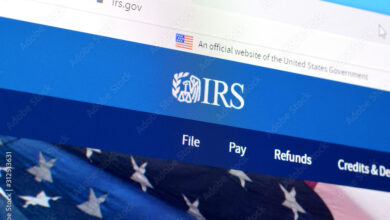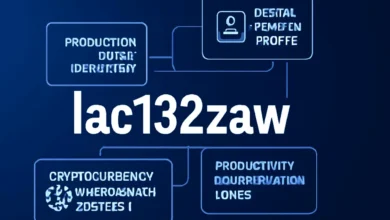How to Safely Share Documents and Visuals Without Privacy Risks

Sharing digital content is second nature now. Whether you’re working on a client pitch, putting together a case study, or collaborating on marketing materials, the process almost always involves sending documents and visuals back and forth through email, cloud storage, internal chat, or sometimes even a public platform.
It’s fast. It’s easy. And when you’re deep in the workflow, it’s easy to forget how much trust is built into that click of “share.”
Because every time you send a PDF, a presentation, or a screenshot, you’re sending more than what’s visible on the surface. You’re also potentially sending a trail of personal data, internal notes, sensitive identifiers or even context that was never meant to be part of the final conversation.
This isn’t about being overly cautious. It’s about being realistic. As digital files become the backbone of business communication, protecting the information inside them without compromising the content itself is a skill worth mastering.
The Things You Don’t See (But Others Might)
What makes document and visual sharing tricky is how deceptive files can be. A slide looks clean. A screenshot seems harmless. A PDF feels final. But behind the scenes, there’s often more going on than what you see at a glance.
Take a Word document, for example. You might remove a name from the body of the text, but if track changes is still on or if the document history hasn’t been cleared that name can reappear with a single click. In a design mockup, it might be a layer that wasn’t flattened, a comment thread that’s still live, or a cropped-out section that someone can drag back into view.
Photos are another surprisingly risky format. That beautiful iPhone screenshot you used to show off a workflow? It might include a notification banner with someone’s name or email address. A team photo uploaded to the company blog might carry embedded location data. Even spreadsheets, which often feel dry and stripped-down, can include hidden columns, formulas, and filters that tell more than you intended.
In short, the file you think you’re sharing and the file someone else is opening aren’t always the same thing.
The Casualness That Becomes Risk
Most privacy issues around document sharing don’t come from malice. They come from speed. You’re in the middle of a project. You’re juggling Slack, email, Figma, Docs, and maybe a half-dozen tabs with reference material. You export something quickly, attach it, and move on.
No one’s trying to leak data. But that’s how it happens.
The stakes can vary. Sometimes it’s a minor embarrassment like including a client’s name in a file that wasn’t supposed to be personalized yet. Sometimes it’s a bigger issue like sending out a deck with financial projections that were meant to stay internal. Either way, the impact tends to go beyond the file itself. It touches trust, reputation, and sometimes even compliance.
And once something is shared, you can’t unshare it.
Why “Just Checking” Isn’t Enough
Many teams try to patch over this risk with a manual review. Someone takes a final pass through the deck. Someone else checks the layers in the Photoshop file. Maybe you ask yourself, “Does anything sensitive stand out?”
But here’s the problem with that: when you’re close to the material, you don’t always see the risks. What feels obvious to an outsider an internal code name, a sidebar with email addresses, a file path in the footer can easily feel invisible to the person who built the file.
That’s why the answer isn’t just to try harder. It’s to design a process that doesn’t rely on memory or guesswork. You want a safety net that works without slowing you down. And that’s exactly where a redacting tool becomes invaluable not as a last-minute fixer, but as part of the natural content flow.
Redaction tools designed for modern teams don’t just black out text. They permanently strip metadata, delete revision histories, and identify sensitive fields based on patterns. According to the National Institute of Standards and Technology (NIST), metadata removal is a core step in data sanitization practices for ensuring document privacy.
Design Files, Screenshots, and the Visual Side of Risk
Visuals are increasingly a part of how we share knowledge and communicate ideas. But they also come with their own layer of privacy risk.
Design files, for example, often live in environments like Figma or Sketch, where layers, comments, and version history are baked in. Exporting a file doesn’t always eliminate those details especially if you’re copying and pasting or sending links instead of flattened files.
Even screenshots, which feel like the most straightforward format of all, can carry surprising baggage. That tab you had open in the background? That calendar event visible in the toolbar? That browser plugin you forgot was running? It all gets captured, and unless you’re intentionally cropping and scanning, it’s easy to miss.
It’s not about being paranoid it’s about being aware. A screenshot is a moment in time, but it’s also a window into your system, your day, and sometimes your identity.
When you approach visuals with the same privacy mindset as documents, you start to see where boundaries can be tightened and where trust can be earned.
Building a Safer Sharing Culture
At the end of the day, privacy risks in document and visual sharing aren’t just technical they’re cultural. They stem from how teams think about files, ownership, and responsibility.
When content is treated like something disposable something that’s easy to resend, duplicate, or forward it becomes harder to track what version is out there, or who’s seen what. But when content is treated like a representation of your team’s professionalism, that’s when the real shift begins.
You don’t have to stop sharing. You just need to share with more intention.
That might mean setting default privacy layers on shared links. It might mean building redaction into your pre-publish checklist. It might mean slowing down by five minutes to make sure your screenshot is cropped and your dashboard data is safe.
None of this is about perfection. It’s about minimizing regret. About avoiding the moment where you realize something private slipped through the cracks and is now out of your hands.
Thoughtful Sharing Is Better Sharing
The internet doesn’t forget. That’s both its power and its challenge. So when you send a file, publish a post, or present a visual, the question shouldn’t just be “Does this look good?” It should also be “Does this respect privacy?”
Because safe sharing isn’t just a legal concern it’s a human one. It tells your clients, your colleagues, and your audience: we see you. We protect what matters. We don’t cut corners.
And in a world where trust is hard to build and easy to lose, that message speaks volumes.




